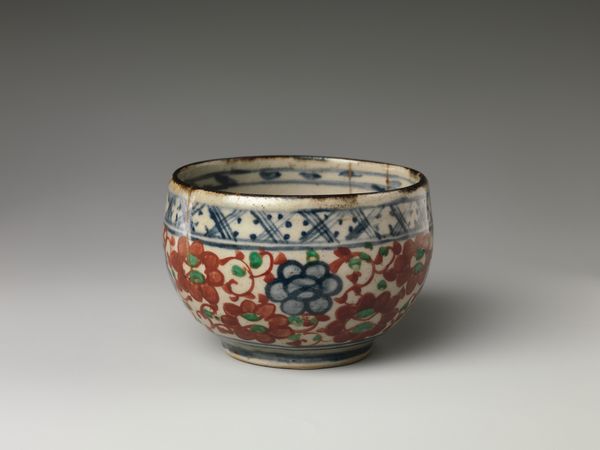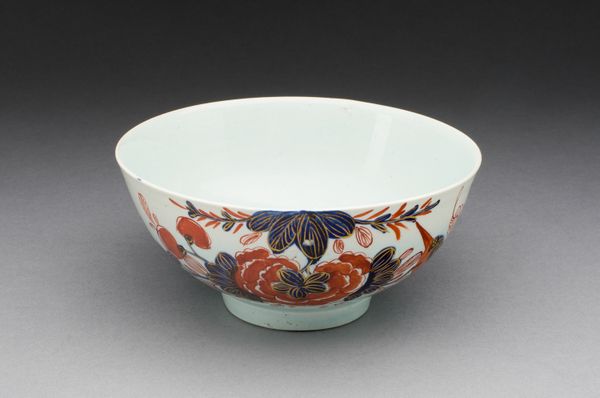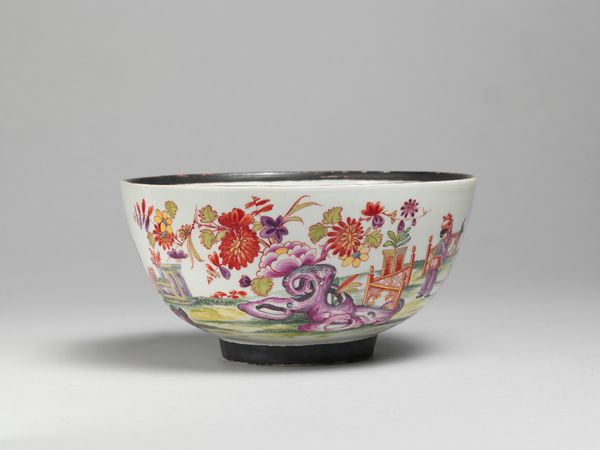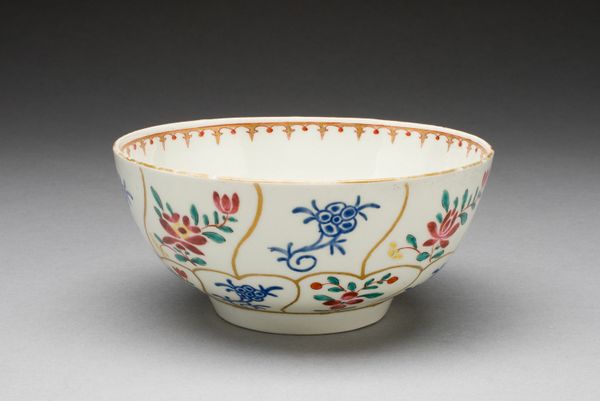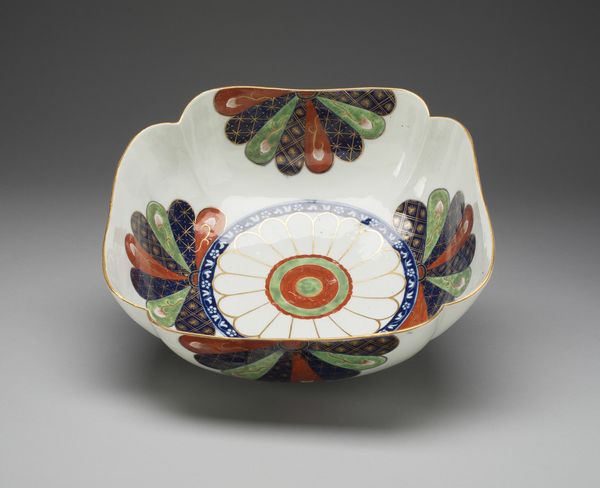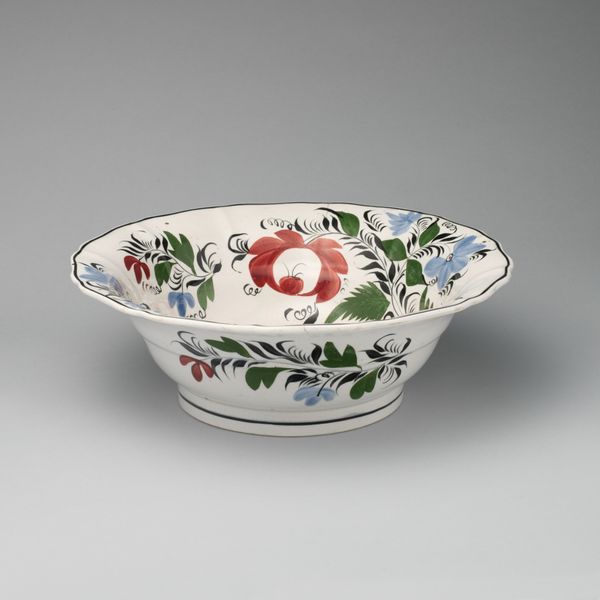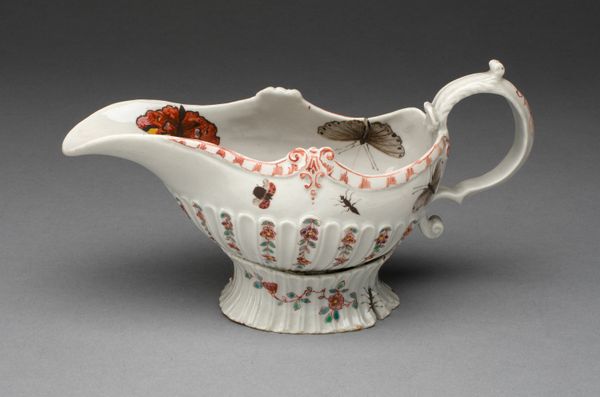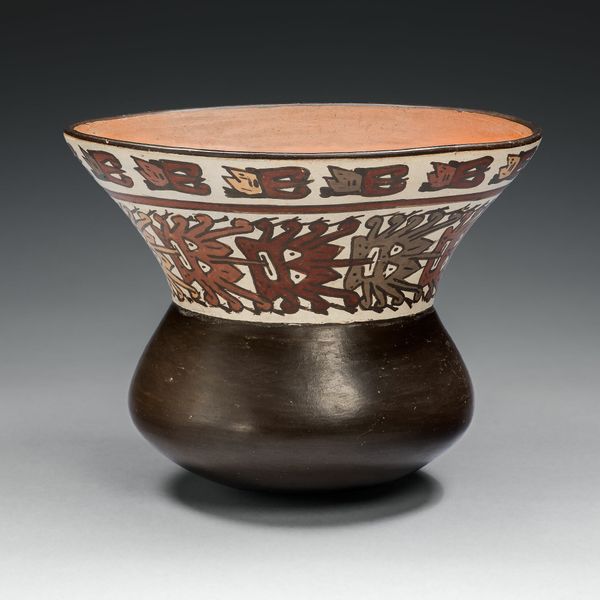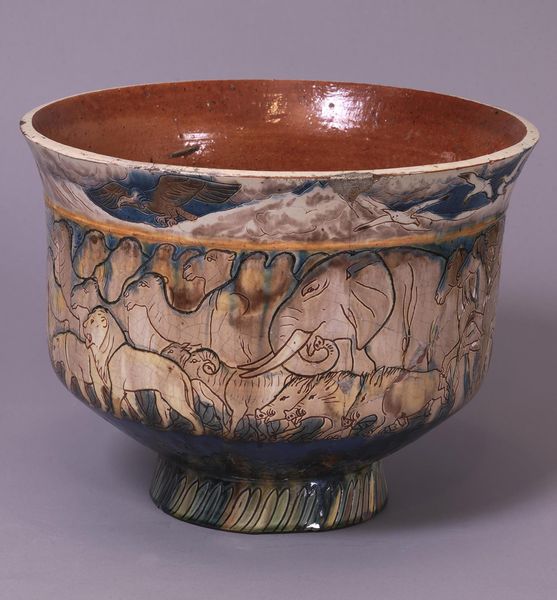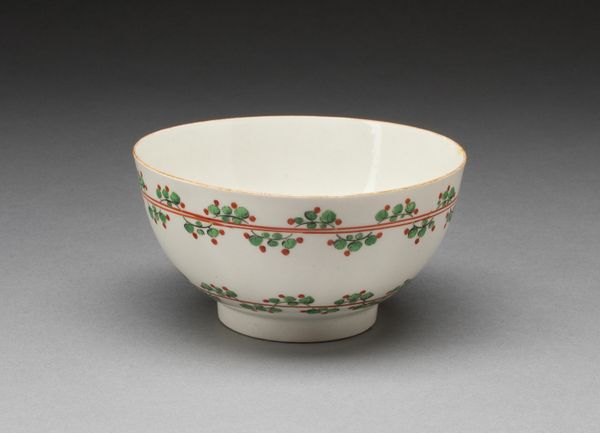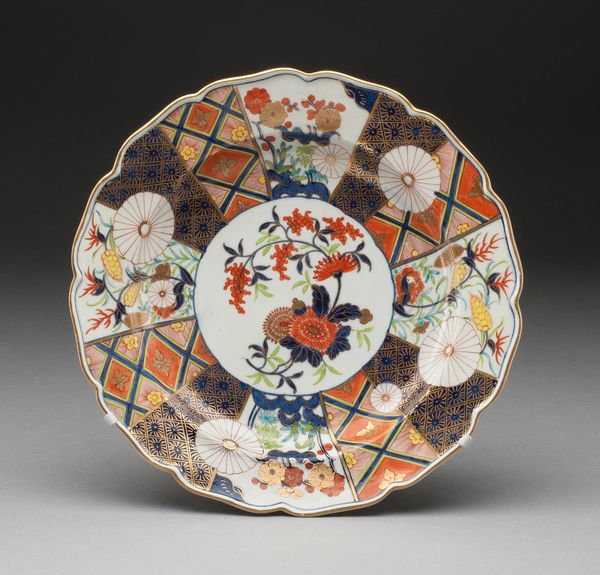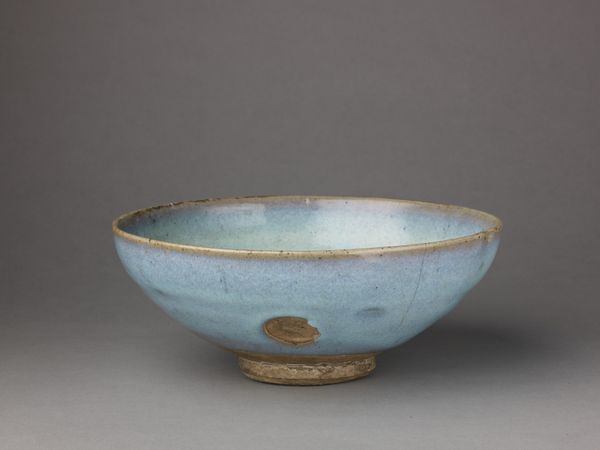
ceramic
#
asian-art
#
ceramic
#
decorative-art
Dimensions: H. 4 in. (10.2 cm); Diam. 7 3/16 in. (18.2 cm)
Copyright: Public Domain
Curator: Here we have a beautiful ceramic bowl, created between 1800 and 1855 by Nin'ami Dōhachi, also known as Takahashi Dōhachi II. It's titled "Bowl with Blossoms." Editor: My immediate impression is how cheerful it feels. The round shapes, the red of the blossoms, and the overall simplicity create an optimistic, almost playful atmosphere. Curator: Absolutely. Dōhachi was working during a period where decorative arts played an increasingly vital role in reflecting social status and cultural identity. This piece, now residing at The Met, provides insight into the aesthetics favored by certain classes in Japanese society at that time. Editor: The blossom motif, particularly against that creamy background, seems laden with meaning beyond simple decoration. Red often signifies joy, vitality, or even rebellion, depending on context. Is there a discourse about flower choices in that time and space and their resonance? Curator: Precisely. The blossoms are more than decorative; they are ideograms of transience, renewal, and even the fleeting nature of beauty. This bowl exists as more than a useful item; it embodies the philosophies in society. Remember too that social status impacted ceramic artists, placing limitations on experimentation that we may regard as frustrating from our modern perspectives. Editor: How do you mean frustrating? Because the red blossoms feel constrained somehow by those bold outlines and the even distribution, in that context. Did gender influence the production of these items too? Was it a space for male expression in service of wealthy patrons? Curator: While male potters certainly dominated the field, as was typical in many trades during the Edo period, to claim their work as merely subservient risks negating individual skills within cultural constraints. We see within these very tight constructs how individual potters distinguished themselves to attract patrons. These patrons, after all, reinforced or undermined cultural standards that impacted both genders. Editor: A crucial reminder that the political is always personal, even on a bowl. It challenges our present perception to witness art constrained within power systems and understand those as parameters that actually push some artists toward creative innovation within the same space. Curator: Agreed. The dialogue here goes beyond form and color and into wider discourse around art, function, culture, and class in Edo-period Japan. Editor: It forces me to re-evaluate simple aesthetic charm and to perceive layered stories behind what I would’ve written off initially as quaint.
Comments
No comments
Be the first to comment and join the conversation on the ultimate creative platform.
